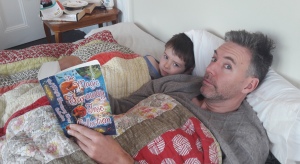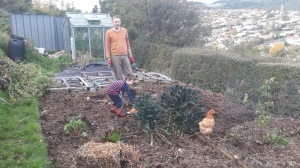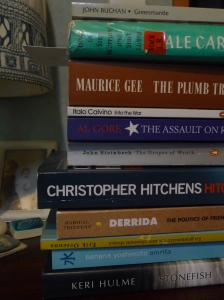One: Going home
Vincent O’Sullivan has written a 14-episode account of Ralph Hotere’s journey home. The number recalls Hotere’s use of the number, his referencing of the Stations of the Cross and of his 14 siblings. Frustratingly, the full version is only available to subscribers (when did the Listener change that?).
Two: Favourite birds (my son will be so cross that I haven’t used the proper full names, but the truth is, I can’t remember them)
godwit
kingfisher
pelican
spoonbill
robin
shag
plover
kea
bellbird
crane
heron
mandarin duck
black cockatoo
superb lyrebird
Three: Books that got me through my childhood, and my children’s
Corduroy, Don Freeman
Any of the Frances books, Russell Hoban (illustrated by Garth Williams)
Tell Me What It’s Like to Be Big, Joyce Dunbar (illustrated by Debi Gliori)
Mr Gumpy’s Outing, John Burningham
Big Momma Makes the World, Phyllis Root (illustrated by Helen Oxenbury)
The Ramona books, Beverly Cleary
Big Sister and Little Sister, Charlotte Zolotow (illustrated by Martha Alexander)
Virginia Wolf, Kyo Maclear (illustrated by Isabelle Arsenault)
Come On, Daisy!, Jane Simmons
The Raft, Jim LaMarche
The Tiger Who Came to Tea and the Mog books, Judith Kerr
Dogger and everything else, Shirley Hughes
far too much by Noel Streatfeild
Anne of Green Gables and all the rest, LM Montgomery
bonus: Kitten’s First Full Moon, Kevin Henke + about a hundred others
Four: Authors I’ve found myself consuming in bulk
George Perec
Italo Calvino
Primo Levi
Laurence Fearnley
Janette Turner Hospital
Nigel Cox
Sara Maitland
Jeanette Winterson
Maurice Gee
Philip Pullman
Ann Patchett
Jim Crace
Michael Ondaatje
(see the children’s list above)
Five: Foods that make life better
avocado
pistachios
chocolate
smoked salmon
salad, lots of it
roast chicken, then chicken soup
oranges
peaches
eggplants
poisson cru
tomatoes
fennel seed and olive oil biscuits
bacon
lasagne
Six: 14-letter words
Seven: What I want in a house
a chair by a window, just for reading
a kitchen that I can eat, cook, talk, and read in
a space for the kids to play
a front porch
a sheltered space to eat outside
plenty of trees
a glasshouse
vegetable patches
a workspace
bookshelves in every room
a woodburner
insulation
flowers
light
Eight: Condiments, loosely interpreted
lemons — fresh, juiced, zested, preserved
honey
mustard
fennel seeds
yoghurt
parmesan
sea salt
pepper
tomato sauce
mint
coffee
a book
a friend
quiet
Nine: Punctuation that makes text prettier
fanciful ampersands
the Oxford comma
double quote marks
em-dashes
en-dashes
ellipses
semi-colons
full stops
question marks, sparingly
well-placed commas
accents
tidy, well-aligned bullet points
parentheses, occasionally
spaces
Ten: Plants I like to have in my garden
tulips
crocuses
sweetpeas
roses
azaleas
ferns
mint
thyme
sage
peas
beans
lettuces
zucchini
potatoes
Eleven: The elements of a fine day
rain
sun
a small boy’s arms around my neck
that first cup of coffee
a shower
a walk, run, or yoga class
music
writing
banter
a kiss
friends
seeing something through my children’s eyes
lunch
supper
Twelve: A 14-year-old dancer
Thirteen: Colin McCahon’s Stations
Fourteen: A sonnet, of course
Not in a silver casket cool with pearls
Or rich with red corundum or with blue,
Locked, and the key withheld, as other girls
Have given their loves, I give my love to you;
Not in a lovers’-knot, not in a ring
Worked in such fashion, and the legend plain—
Semper fidelis, where a secret spring
Kennels a drop of mischief for the brain:
Love in the open hand, no thing but that,
Ungemmed, unhidden, wishing not to hurt,
As one should bring you cowslips in a hat
Swung from the hand, or apples in her skirt,
I bring you, calling out as children do:
“Look what I have!—And these are all for you.”
Edna St. Vincent Millay











